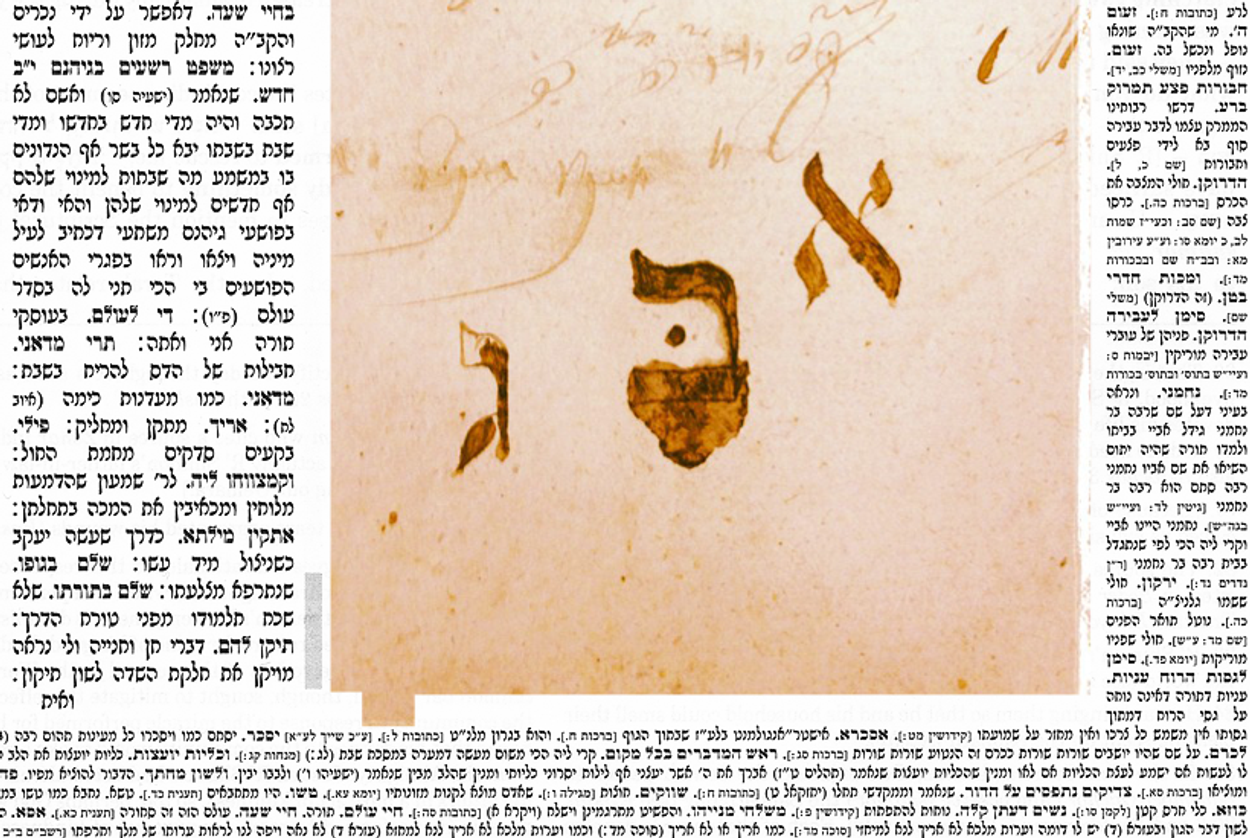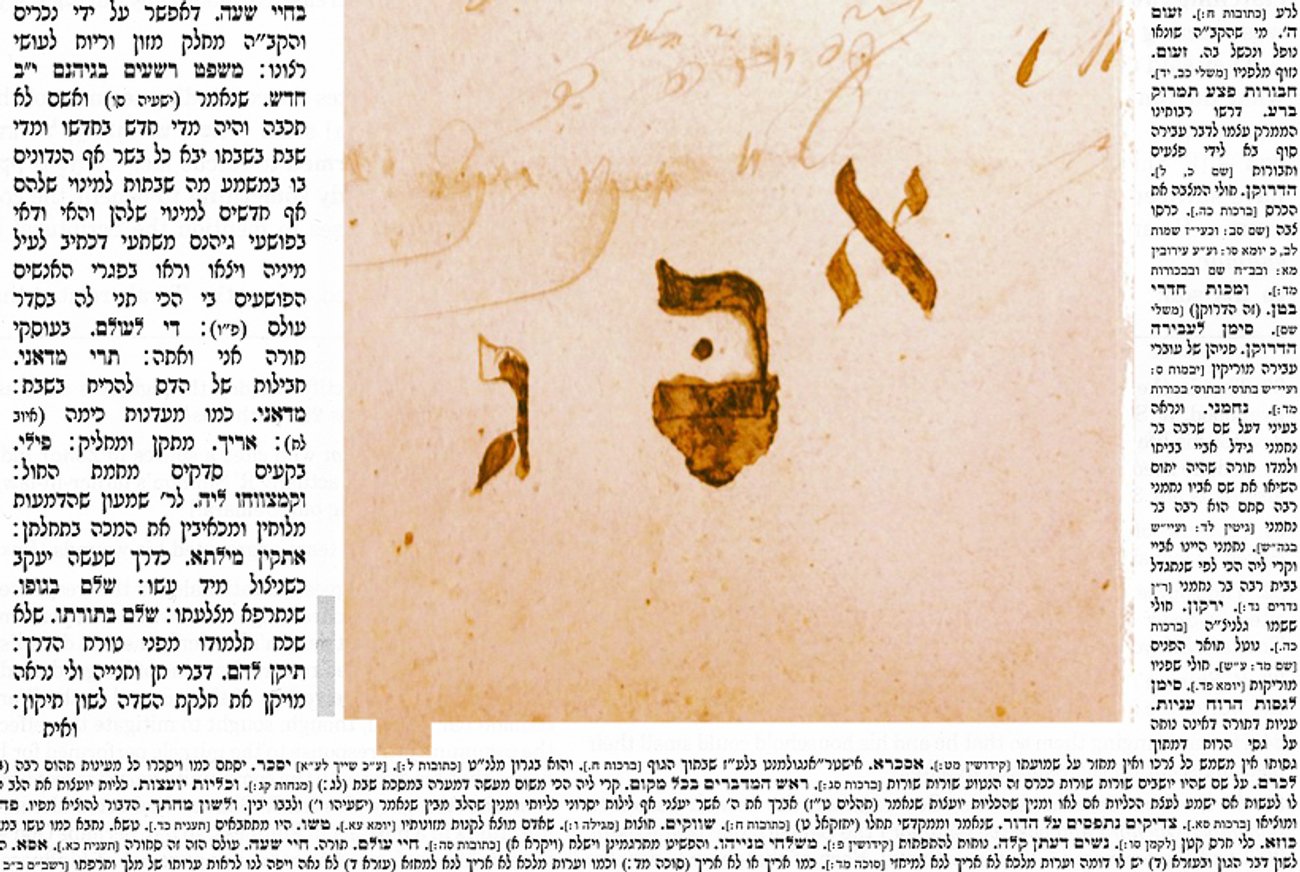The Study of Law as a Spiritual Act: Finding Truth and Meaning in the Talmud
Two years and 100 columns in to the Daf Yomi cycle, our critic pauses to reflect on its intellectual challenges and delights




Literary critic Adam Kirsch is reading a page of Talmud a day, along with Jews around the world.
This week, punctuated for all Jews by Yom Kippur, also marks a particular transition for Daf Yomi readers. After two years, we have finally come to the end of Seder Moed, the division of the Talmud that deals with Jewish holidays. In that time, we have read hundreds of pages on the laws of Shabbat, in Tractates Shabbat and Eruvin, and learned the laws of most of the other major Jewish holidays—Rosh Hashanah and Yom Kippur, Pesach and Sukkot and Purim. We’ve learned about laws that apply to all festivals, in Tractate Beitzah, and those that apply only to the intermediate days of festivals, in Tractate Moed Katan. And we’ve read about rituals from Temple times that have not been practiced for almost 2,000 years—such as the collection of tithes, in Tractate Shekalim, and pilgrimages to Jerusalem, in Tractate Chagigah—but have remained a subject of study for all that time.
As it happens, this week also marks the 100th installment of my Daf Yomi column. These two milestones have led me to step back from the daily routine and reflect on what I have learned over the past two years of exploring the Talmud. I’ve been further prompted in this direction by reading a new book, The Talmud: A Biography, by Harry Freedman, which offers a brief history of the Talmud and the role it has played in Jewish thought and practice. So important is that role, so ubiquitous is the Talmud in Jewish culture, that the later parts of Freedman’s book tend to blur into a history of Judaism in general, taking in everything from Spinoza’s secularism to the miracle-working of the Baal Shem Tov.
But Freedman, drawing primarily on recent English-language scholarship, sheds valuable light on the early stages of the Talmud’s history, which remain the most enigmatic. The Talmud, as I’ve been reminded again and again in reading Daf Yomi, is not really a book, or even a collection of books, like the Bible. It is, rather, a palimpsest, or, to borrow Jonathan Rosen’s metaphor in The Talmud and the Internet, a set of hyperlinks. At the center of the page is the Mishnah, the codification of Jewish law made by Rabbi Yehuda HaNasi around the year 200 C.E. Then there is the Gemara, the extensive commentary and debate on the Mishnah, which took place largely in Babylonian yeshivot in the subsequent three centuries. Finally there are the commentaries around the margins, the most important of which are those of Rashi and the Tosafists, French scholars of the Middle Ages.
Yet, as Freedman explains, the Mishnah and the Gemara are deeply mysterious texts, whose origins and structure continue to be debated by scholars. According to the traditional view, as recorded in Pirkei Avot, the Oral Law was given to Moses on Mount Sinai and transmitted through a chain of authorities down to Yehuda HaNasi, who finally wrote it down at a time when the land of Israel was in chaos and the tradition threatened to fall apart. But a secular, scholarly approach raises questions about this account that likely will never be answered. When exactly did the laws recorded in the Mishnah take shape? Was the idea of an Oral Torah the invention of the Pharisees, the sect of rabbis who helped to shape Judaism during the late Second Temple period? (Their rivals, the Sadducees, focused on priestly worship in the Temple and had less interest in oral traditions.) What role exactly did Yehuda HaNasi play in editing and compiling the laws? (As Freedman notes, he couldn’t have been the final editor, since the Mishnah refers to his death and to people who lived after him.) And the Mishnah refers to earlier incarnations of itself, the Mishnah of Rabbi Akiva and the Mishnah of Rabbi Meir—what were these documents like?
Things get even more complicated when it comes to the Gemara—a word, Freedman explains, that was not commonly used until the 15th century: “The designation gemara was introduced by medieval printers because the Church censors had banned the use of the word Talmud.” The Gemara reads like a continuous discussion between various rabbis: An issue is raised, Rabbi Elazar gives his opinion, Reish Lakish gives an alternative view, Rava and Abbaye disagree, and so on. It is easy to lose track of the fact that, in reality, the rabbis lived over a span of five centuries, in both Palestine and Babylon, so that most of them never talked face to face at all.
The Gemara as we have it is a carefully edited text, bringing together different orally transmitted traditions as if in a single discussion. “There are,” Freedman writes, “at least four chronological layers of material in the Talmud … [but] it’s not until we analyze it closely that we can see the joins between the layers.” Nor is much known for certain about the centuries-long process by which this immense and complex oral tradition was reduced to written form: “At least some of the Talmud was written down by the 8th century, but most of it probably circulated in an oral form for another 300 years.” This means that millions of words of Talmud, with all their fine distinctions and subtle arguments, were memorized and recited for almost 1,000 years. The continuous transmission of the Talmud from teacher to student over the generations is a feat of memory that makes the Homeric epics look simple.
Thanks to the Internet, the Talmud is probably encountered by more Jews than at any time in its history
That is one lesson I take from reading The Talmud: A Biography—the sheer amount of intellectual effort and devotion that was required for the Jewish people to create and preserve this monument. Another lesson, which comes to the fore in the book’s discussion of the Middle Ages, is the moral courage that Jews showed in defending the Talmud against Christian persecution. Often the Talmud’s foes were themselves converted Jews, who claimed to speak with intimate knowledge of the sinister secrets buried in its pages. In 1240, Nicholas Donin, a Jewish-born Dominican friar, debated Rabbi Yehiel in Paris; each participant left behind an account of the debate. In 1263, a Spanish convert, Pablo Christiani, took up the assault, and the great sage Nachmanides was called upon to defend the Talmud, in front of an audience that included the King of Aragon. (The king was not convinced by Nachmanides’ arguments, but he was impressed enough to say “he had never heard someone who was wrong argue his case so well.”)
At other times, the attack on the Talmud was more direct: It was regularly banned, confiscated, and burned by Christian authorities. Yet when the technology of printing came to Italy, in the late 15th century, the Talmud was one of the first works to be published, so great was the demand of Jewish readers for an authoritative copy of their sacred book. No edition of the Talmud, however, was so heavily loaded with meaning as the one printed in Heidelberg in 1945, the so-called “Survivors’ Talmud.” A rabbi who had been imprisoned in Dachau, Samuel Snaig, obtained two full sets of the Talmud from the Joint Distribution Committee in America, then convinced the U.S. Army to take over a German printing plant and publish 100 copies, for the use of Jews in Displaced Persons’ Camps. It was, as Freedman writes, a vivid demonstration of the sheer endurance of the Talmud, and of Judaism: “the people of the Talmud printing their ancient tome on presses belonging to the villains who had tried to destroy them.”
Today, thanks to Daf Yomi and the Internet, the Talmud is probably encountered by more Jews than at any time in its history. Of course, reading Daf Yomi is not like studying the Talmud the way it was historically studied in the academies of Babylon, or the schools of medieval Spain and France, or the yeshivot of Eastern Europe. Daf Yomi offers a walking tour of the Talmud, whose pace is too fast for deep exploration. For myself, however, I have found it a revelatory and deeply affirming Jewish experience. Of course, the Talmud is grounded in a worldview and a set of beliefs that I, like most Jews today, do not share. I am reminded of that regularly, whenever I encounter a passage about demons, or folk magic, or the status of women, or the ethics of divine punishment.
Yet reading the Talmud does not involve a simple affirmation of belief, the way prayer does. It offers instead an intellectual challenge, a series of logical problems, a chance to participate in a historical debate—above all, an immersion in the mental world of our ancestors. “Turn it and turn it, for everything is in it,” as the famous line from Pirkei Avot says, and when it comes to the Talmud this seems literally true. There are few areas of life, from the etiquette of going to the bathroom all the way to the sacred rituals of the high priest in the Temple, that the Talmud does not explore.
Above all, I find myself inspired by the rabbinic idea that study of the Law is not merely a preparation for true belief or correct behavior, but is itself a spiritual act. The rabbis, of course, would not have countenanced any separation of Jewish study and Jewish practice: For them, the two were inextricable. The idea of a 21st-century Jew who reads the Talmud but doesn’t keep kosher or keep the Sabbath would have seemed outrageous and impossible. But in the modern age, I increasingly think as I get older, any form of authentic connection to Judaism is legitimate. We are all trying to find a version of the tradition that we can live with, that speaks truthfully and meaningfully to us. For me, the discovery of the Talmud through Daf Yomi has been a wonderful way of making that connection.
To read Tablet’s complete archive of Daf Yomi Talmud study, click here.
Adam Kirsch is a poet and literary critic, whose books include The People and the Books: 18 Classics of Jewish Literature.